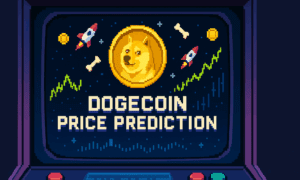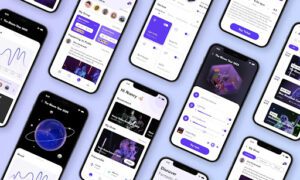Travel is no longer about exploring new places. Consumers nowadays want experiences that stay with them even after the trip is finished. And that’s where experiential marketing comes in. It allows travel brands to interact with their clients in a personal manner by giving them moments that are genuine, personal, and unforgettable.
Travelers seek something beyond seeing sites. They want to sample local cuisine, meet locals, and feel immersed in culture. For travel businesses, that translates to moving from being a seller of packages to being a deliverer of experiences. It’s no longer about describing to people what a place is like; it’s about encouraging them to experience it.
In this post, we’ll discuss how experiential marketing is transforming the travel sector. We’ll also cover how you track campaign effectiveness. So, let’s get started!
Why Experiential Marketing Matters in Travel?
Travel has moved beyond being a destination. Travelers nowadays crave experiences that are emotional, memory-making, and storytelling. Travel experiential marketing is all about that demand. It doesn’t show discounts or offers but creates real experiential experiences that get travelers to feel, explore, and connect. It transforms regular holidays into experiential holidays.
Creating Memorable Experiences
It’s all about “doing” and not “seeing” with experiential marketing. Travelers immerse their senses, participate in new activities, and are part of unique experiences. A travel agency, for example, can plan a wine-tasting experience to Napa Valley or art immersion to New York City.
In addition, companies can provide customized incentive group travel. These trips offer unique and unforgettable experiences for business travelers. Unlike regular commercials, such experiences give travelers stories to tell. They also provide photos to upload and memories to treasure for a lifetime.
Emotional Connection with Travelers
Among its most significant impacts is that of creating an emotional connection. Travelers do not want to be told something; they want to be made to feel something. By providing experiential hands-on offerings like guided local tours, cultural workshops, or interactive pop-up experiences, brands allow people to connect with destinations on an emotional level.
It is a powerful connection that tends to get travelers to better retain knowledge of their brand, trust it, and choose it for future trips.
Driving Loyalty and Repeat Business
A great experience creates loyalty. Consumers are likely to return to a brand that gave them a wonderful and customized experience. Travel experiential marketing creates such loyalty by showing that a brand understands its clients’ requirements. For travel companies, it can be repeat bookings, memberships, or subscriptions for future journeys. It’s never a one-time sale—it’s creating a relationship.
Being Different in a Competitive Market
It is very competitive out there in the US travel market. Traditional advertising falls into the background noise. Travel experiential marketing stands out by offering something real and fresh. It differentiates brands, gives travelers a reason to buy from one rather than from another, and has a great reputation for innovation and customer service.
It actually transforms travel from being merely an activity to becoming a remembered experience. It creates emotional experiences, sharing, loyalty, and differentiation for brands. For travelers, it means enjoying more impactful journeys. For brands, it means measurable value with lasting customer relationships.
Amplifying Brand Awareness
Travel experiential marketing also promotes awareness organically. When travelers enjoy a meaningful experience, they often share it on social media. They also talk about it with their families and colleagues. Social media spreads these moments even further. This gives brands publicity without the need for massive ad investments.
For campers in remote locations, satellite internet for camping ensures that they can post their experiences in real time, upload images, or chat with others while still thoroughly enjoying the trip. Social platforms like Instagram, TikTok, and YouTube allow travelers to showcase their experiences, hence making the brand appear more genuine and trustworthy to other individuals.
How to Measure the Success of Your Experiential Marketing Campaign?
Experience marketing is excellent, but you want to know if it’s yielding for you. Monitoring for success uncovers all that you did well, badly, and how you can improve next time with upcoming promotions. Here is how travel businesses can monitor their effectiveness.
- Track Engagement: Engagement is a great signal that people are experiencing your campaign. Think about how visitors are engaging with your experiences. Are they participating in events, enlisting in tours, or booking activities? Web engagement is just as important—likes, shares, comments, and mentions on social media show how people are experiencing and promoting your experience.
- Collect It Directly from Travelers: Get feedback from people after their experience. Short surveys, polls, or even chats can offer insights into how people experienced things. Did they like the activity? Did it alter how they perceive your brand or place? Receiving feedback directly lets you know how it made them feel, and that’s a large part of experiential marketing’s focus.
- Monitor Social Media and Shares: Shareable moments are typical with experiential campaigns. Monitor hashtags, posts, and stories for your campaign. Are images or videos being shared? Are others tagging your brand or mentioning it positively? This measures reach and shows how far-reaching your campaign has spread from its original audience base.
- Track Bookings and Sales: Campaigns ultimately need to lead to action. Keep track of if and how the campaign converts to additional bookings, ticket sales, or sign-ups. Modest increases are well worth it because experiential marketing builds lasting loyalty, not short-term sales.
- Think About Repeat Customers: A good experiential campaign fosters loyalty. Do travelers return or stay engaged with you once they’ve had the experience? Repeat visits or ongoing engagement with programs show that you’ve made lasting impressions with your campaign.
Measuring success is more than numbers. It’s about engagement, emotional connection, social shares, and customer loyalty. By tracking these, travel brands can catch a glimpse of real impact from experiential marketing and create drives that actually resonate with travelers.
Closing Lines on Experiential Marketing in Travel
Travel is being revolutionized by experiential marketing. It’s something other than showcasing deals or destinations. It provides concrete, shareable experiences that travelers can feel and discuss. It creates strong emotional connections and stands out from other brands in a crowded market.
By showcasing experiences, travel companies can create repeat visits and word-of-mouth loyalty. Travelers carry with them memories of things they did, places they went to, and stories they can share. Sharing these experiences on social media or with other individuals also increases a brand’s reach without paid advertising.
Experiential marketing converts routine journeys into memorable experiences. For vacationers, it creates lasting memories. For companies, it develops trust, loyalty, and lasting relationships. It’s a strategy that heightens every travel journey’s value and memorability.

































